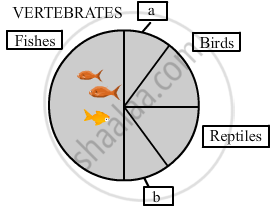Advertisements
Advertisements
प्रश्न
What is Red Data Book?
Define Red data book
‘Red data book’- What do you know about it?
उत्तर १
Red Data Book is the state document created by International Union for Conservation of Nature and Natural Resources (IUCN) for documenting rare and endangered species of animals and plants.
उत्तर २
Red data book: The Red data book is the state document established for documenting rare and endangered species of animals, plants and fungi as well as some local sub-species that exist within the territory of the state or country
उत्तर ३
Red Data Book or Red list is a catalogue of taxa facing the risk of extinction. IUCN - International Union of Conservation of Nature and Natural Resources, which is renamed as WCU - World Conservation Union (Morges Switzerland) maintains the Red Databook. The concept of Red list was mooted in 1963.
The purpose of preparation of Red List are:
i. To create awareness on the degree of threat to biodiversity
ii. Identification and documentation of species at high risk of extinction
iii. Provide global index on declining biodiversity
iv. Preparing conservation priorities and help in conservation of action
Information on international agreements on conservation of biological diversity Red list has eight categories of species.
- Extinct
- Extinct in wild
- Critically Endangered
- Endangered
- Vulnerable
- Lower risk
- Data deficiency
- Not evaluated
APPEARS IN
संबंधित प्रश्न
Identify 'a' and 'b' in the figure given below representing proportionate number of major vertebrate taxa.

Name the type biodiversity represented by the following:
(a) 50,000 different strains of rice in India.
(b) Estuaries and alpine meadows in India
Give one significant contribution of the given scientist
E. Wilson
Define Hotspots
Write the difference between genetic biodiversity and species biodiversity that exists at all the levels of biological organisation.
Explain the Rivet Popper hypothesis.
Very Short Answer Type Question:
Name some plants found on mountains.
Very Short Answer Type Question:
Name two organisms that live in deserts.
Amoeba moves with the help of ______.
Camel stores ______ in its hump.
Name the locomotory organ of Amoeba.
Define – dichotomous key
True or False – If False give the correct answer
Animals are the greatest gift of nature
Match the following
| 1. | Cocoons | Meat |
| 2. | Peace silk | Poultry |
| 3. | Broilers | Silk worm |
| 4. | Sweet Liquid | Andhra pradesh |
| 5. | Goat | Honey |
Cockroach moves with the help of its
Compare and Contrast the insitu and exsitu conservation.
Why do we find a decrease in biodiversity distribution, if we move from the tropics towards the poles?
All among the following are narrowly utilitarian reasons for conservation of biodiversity EXCEPT ______.
Assertion (A): A stable biosphere has to be conserved.
Reason (R): The loss of biodiversity affects land, water, air, etc.
Write a note on Biodiversity.
Give reason for the following.
Stable biosphere has to be conserved.
Flame cells in invertebrates are mainly associated with:
Which of the following respiratory pigment is present in the blood of cockroaches?
Which of the following are important components of biodiversity.
Which of the following groups exhibit more species diversity?
Place suggested for studying mangrove vegetation is ______.
The ______ can swim faster than a cheetah.
Analogy:
Birds: ______:: ______: Cold-blooded.
Match the following:
| 1. | Cartilaginous | a. | Mullets |
| 2. | Bony fishes | b. | Sharks |
| 3. | Pneumatic bones | c. | Reptiles |
| 4. | Three chambered heart | d. | Birds |
Mention two features are seen in Aves to aid in flying.
Which of the following group exhibit more species diversity?
What accounts for the greater ecological diversity of India?
Greater biological diversity of tropics than temperate regions is due to the ______.
Samson and Dorothy surveyed two islands, ‘A’ and ‘B’. They recorded the relevant data in the following format in their research folder:
| Parameter | Island A | Island B | |
| (a) | Area (A) | 45 × 103 Km2 | 12 × 105 Km2 |
| (b) | Regression co-efficient (Z) | 1 | 1 |
| (c) | Y-intercept | 20 | 10 |
- Derive the species-richness for each island.
- Which island exhibits greater biodiversity? Support your answer with a reason.
